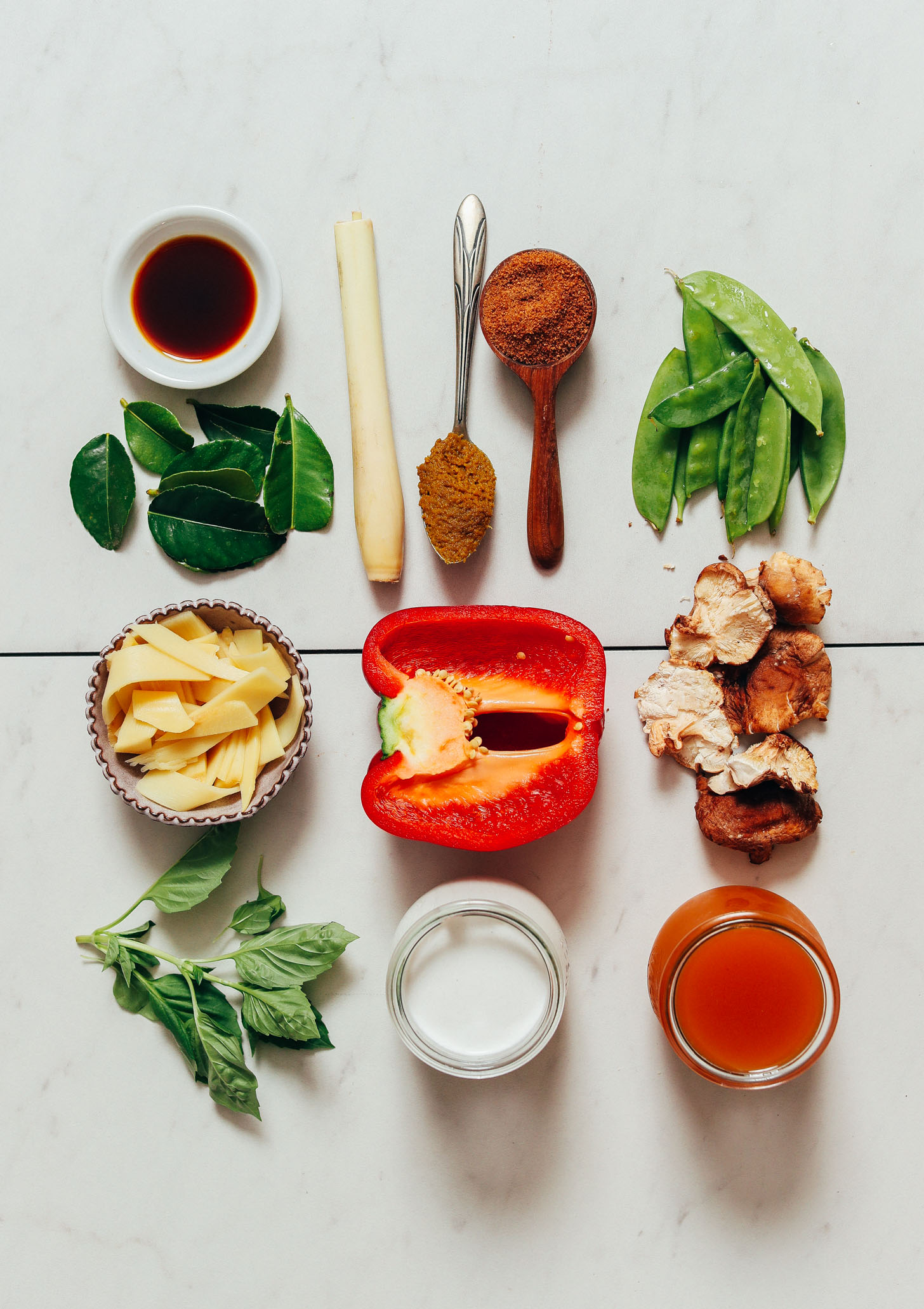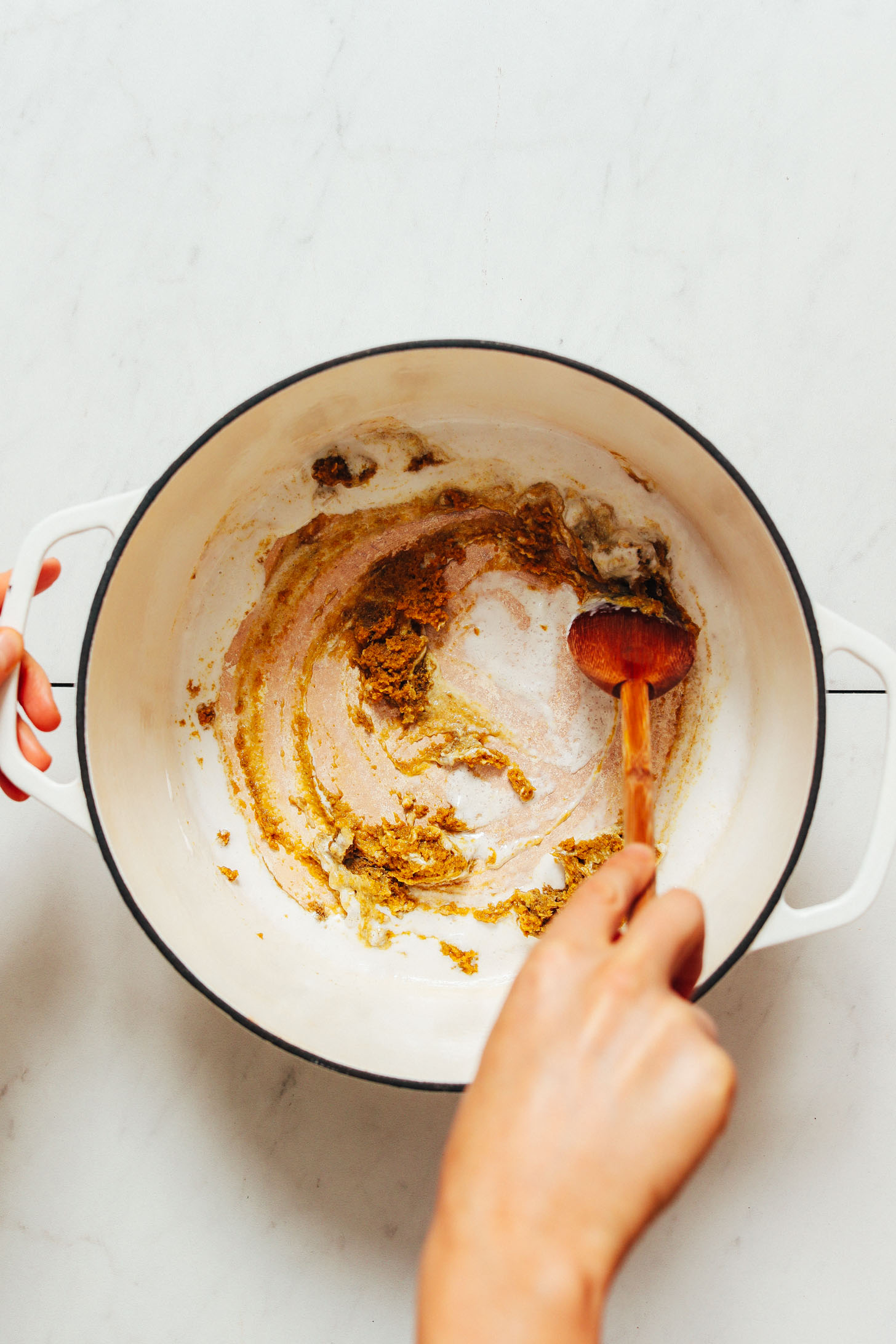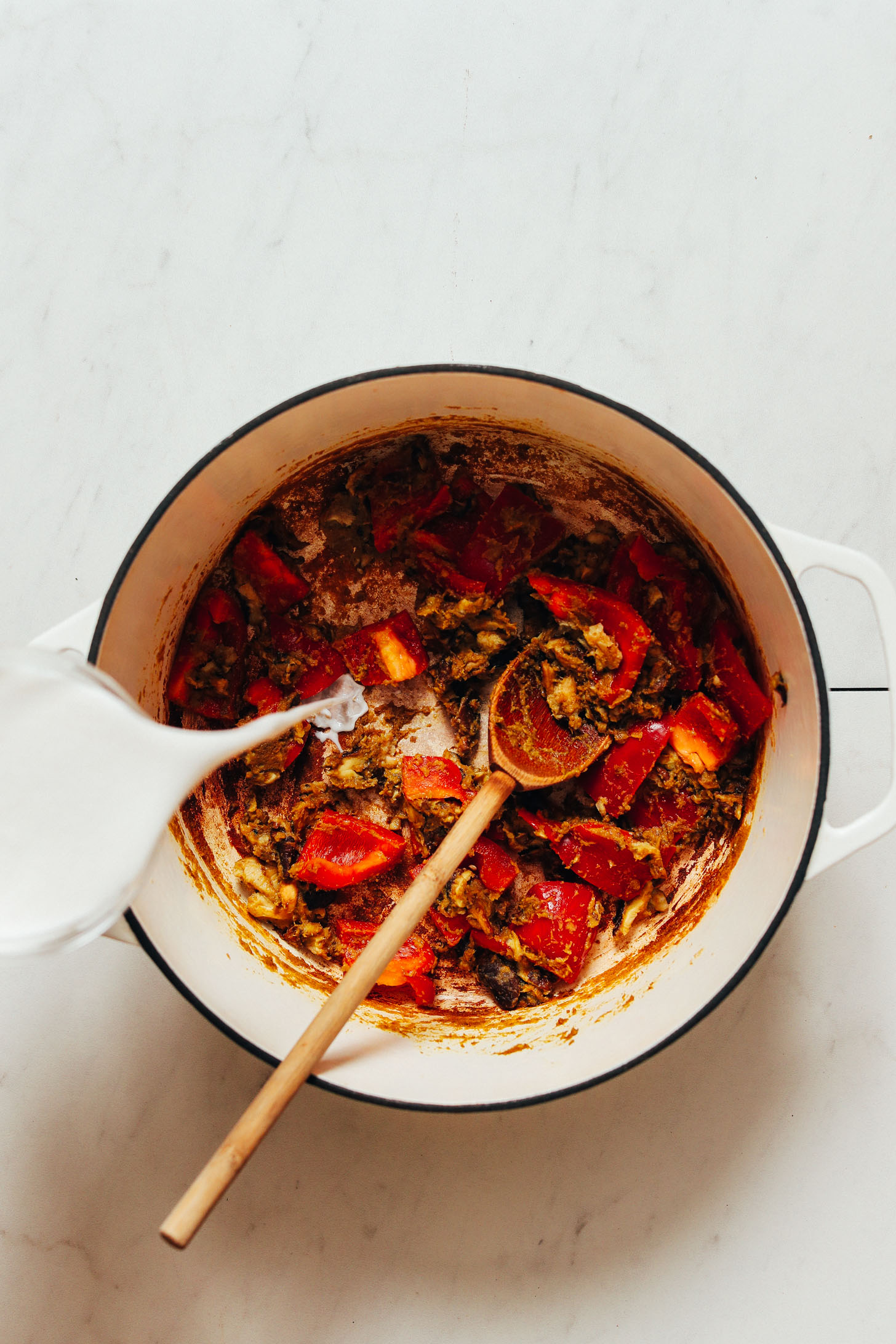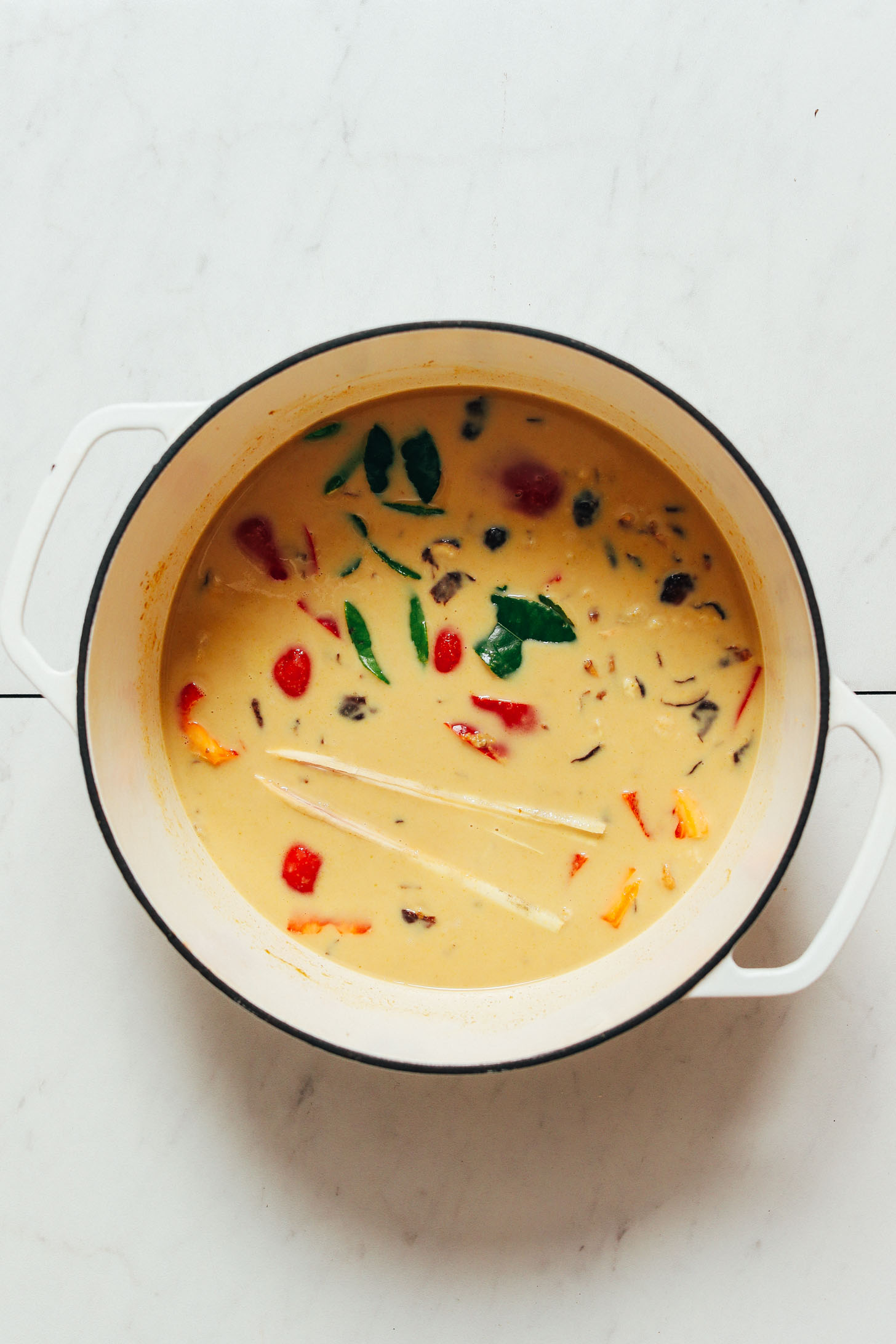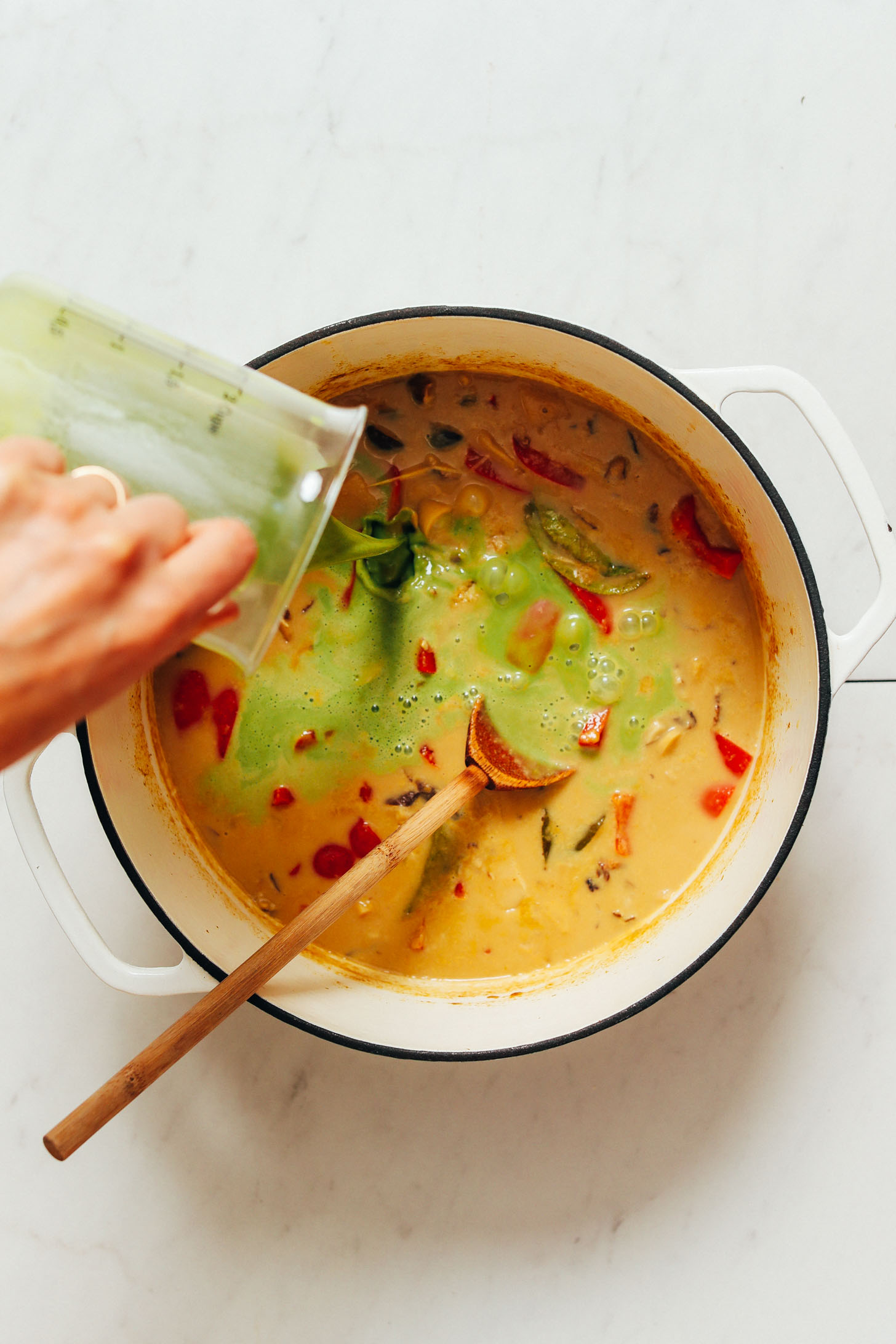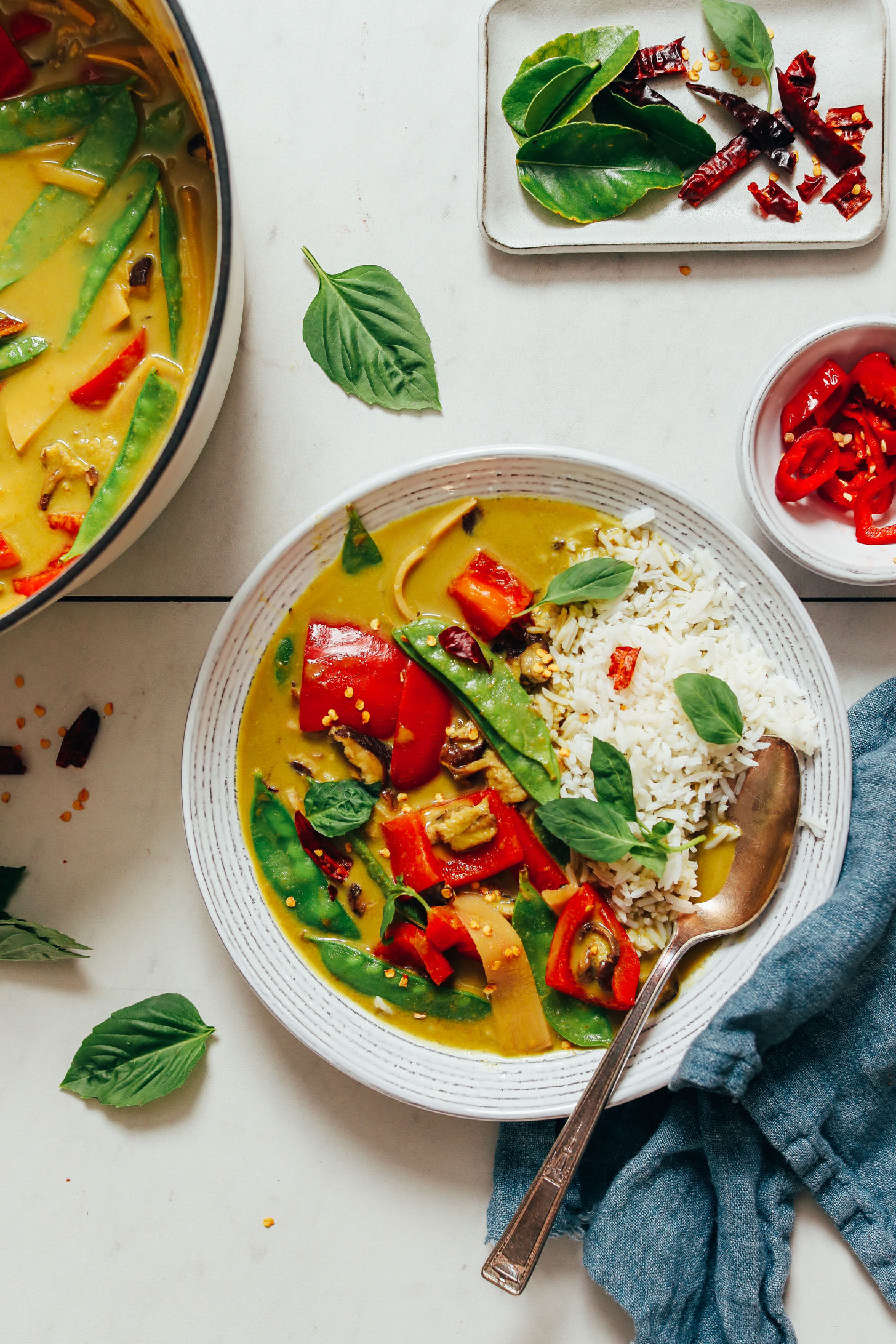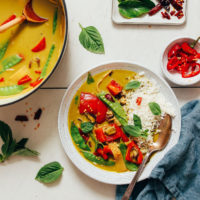About Green Curry
Green curry is a popular Thai dish believed to have originated in the early 20th century (source). It’s made with green curry paste, coconut milk, veggies, and meat and/or seafood. The flavor base (Thai green curry paste) is traditionally made from a combination of green chilies, shrimp paste, garlic, shallots, lemongrass, peppercorns, makrut limes, and cumin seeds (source). It’s spicy and flavorful and pairs perfectly with the sweetness of coconut milk. The following is our inspired (but not traditional) plant-based take on this flavorful Thai dish. For a more authentic version of green curry (with chicken), check out this beautiful recipe from Hot Thai Kitchen.
How to Make Green Curry
To begin, add a small amount of coconut milk to a large pot (we like using a Dutch oven) and allow it to bubble and condense into a cream. The natural oil/cream released from the coconut makes it so that there’s no need for additional oil. To the reduced coconut cream, we added green curry paste as the flavor base. Next come mushrooms for a hearty texture and umami flavor. We like using shiitake, cremini, or button mushrooms, but other varieties will also work. Optionally (we left it off for a lighter meal), add your favorite protein at this time (such as tempeh, shrimp, or chicken). If using tofu, we recommend using this recipe, cooking it separately, and serving on the side for best texture. Next, we added bell peppers for natural sweetness. More coconut milk and vegetable broth are added next, providing a rich and brothy mixture for infusing the curry flavors. We used makrut lime leaves and lemongrass, but they are optional (in case you can’t access them). Next, we added bamboo shoots for a quick and easy pantry-friendly vegetable. Broccoli, cabbage, or another sturdy vegetable would also work well here. To round out the flavors, coconut aminos are added for umami flavor and coconut sugar for sweetness and to balance the subtle heat. The mixture then simmers for 10 minutes to allow the flavors to deepen and the vegetables to soften. For those wanting a more vibrant green color, a cup of the broth can be blended with either fresh herbs (such as basil and mint) and/or a teaspoon or two of barley grass powder. Then simply add it back to the rest of the curry. Finally, in the last few minutes of cooking, stir in snap peas, snow peas, or green peas. They only take a couple minutes to cook and will turn a vibrant green color when ready. We hope you LOVE this green curry! It’s:Subtly spicySaltySweetTangyRich& Versatile! It’s perfect on its own or over rice or quinoa as a light comfort meal. We also enjoy adding a handful of greens and garnishing with cashews for additional texture and protein.
More Thai-Inspired Curries
Easy 1-Pot Massaman Curry 1-Pot Cauliflower Dal Green Curry Coconut Red Curry with Chickpeas Thai Yellow Coconut Curry with Mango
If you try this recipe, let us know! Leave a comment, rate it, and don’t forget to tag a photo #minimalistbaker on Instagram. Cheers, friends!

